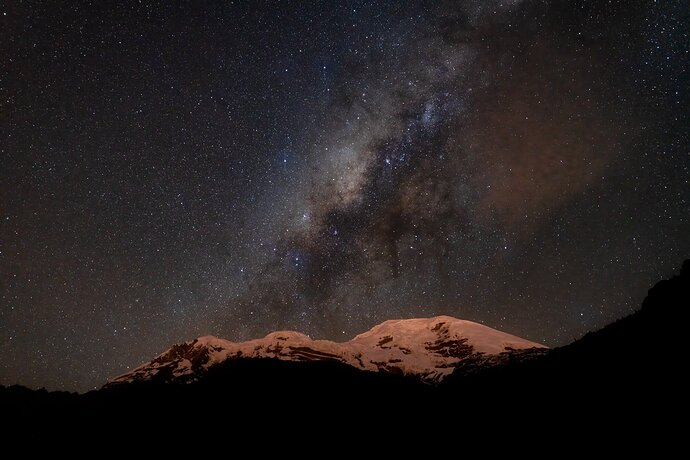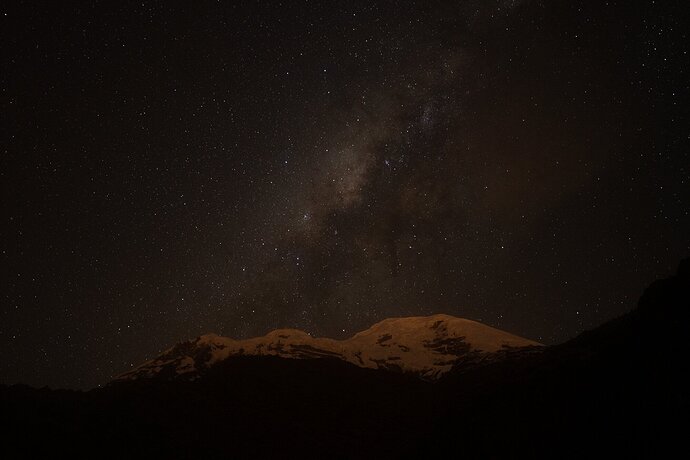No post-processing version:
One of my glacier change research sites is in Ecuador, at Volcan Chimborazo. During our fieldwork this past June, we enjoyed an exceedingly rare mostly clear night (maybe 5-10 of these per year, if even; I once measured an average monthly relative humidity here - based on hourly measurements - at 99.5%!). As soon as I realized that our base camp (at 14,200 ft / 4200 m) was situated such that the Milky Way was draped right over the summit of this 20,000 ft / 6200 m behemoth, I knew I had an image with potential.
The glow on the summit glaciers is from the city of Ambato, about 30 miles away behind the camera.
This is the first of three images from this night that I wish to post for your critique. This one is after moonset, and with just a skiff of cloud. The others represent variations in these conditions.
The name of this image is a nod to the fact that polymath Alexander Von Humboldt, whose best known work was Cosmos, did some of his most important research at Chimborazo, which at the time was thought to be highest mountain in the world. While not near the highest, its equatorial location means that Chimborazo’s summit is farther from the center of the Earth - and thus closer to those stars - than any other point on the planet.
Specific Feedback Requested
I really enjoy night sky photography and I think I am getting better with my in-camera technique, but I am not-at-all confident in my post-processing. I’d appreciate feedback on anything, but especially that aspect of this work. I’ve also posted an unaltered version for comparison.
Technical Details
Sony A7RII with Tamron 17-28 mm f/2.8 at 28 mm. 13 seconds at f/2.8, ISO 3200.
Post processed in LrC (+1.0 exposure, tonal balancing, + dehaze and + clarity, WB to 4050) and PS (curves adjustment in midtones, + saturation in sky, + color balance adjustments to remove some of the yellow from the light pollution glow on the ice), with noise removal using Topaz DeNoise AI (severe noise reduction model).

